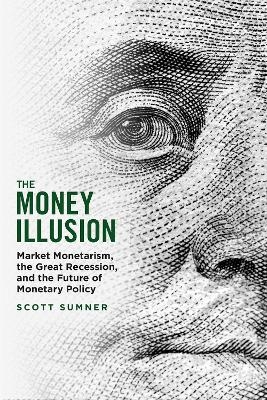
The Money Illusion
University of Chicago Press (Verlag)
978-0-226-82656-1 (ISBN)
Is it possible that the consensus around what caused the 2008 Great Recession is almost entirely wrong? It’s happened before. Just as Milton Friedman and Anna Schwartz led the economics community in the 1960s to reevaluate its view of what caused the Great Depression, the same may be happening now to our understanding of the first economic crisis of the 21st century.
Forgoing the usual relitigating of problems such as housing markets and banking crises, renowned monetary economist Scott Sumner argues that the Great Recession came down to one thing: nominal GDP, the sum of all nominal spending in the economy, which the Federal Reserve erred in allowing to plummet. The Money Illusion is an end-to-end case for this school of thought, known as market monetarism, written by its leading voice in economics. Based almost entirely on standard macroeconomic concepts, this highly accessible text lays the groundwork for a simple yet fundamentally radical understanding of how monetary policy can work best: providing a stable environment for a market economy to flourish.
Scott Sumner is the Ralph G. Hawtrey Chair of Monetary Policy at the Mercatus Center at George Mason University. He is the author of The Midas Paradox: Financial Markets, Government Policy Shocks, and the Great Depression and the economics blog TheMoneyIllusion.
Preface
Introduction: The Real Problem Was Nominal
Part I. The Value of Money
Chapter 1. Cognitive Illusions in Economics
Chapter 2. The Value of Money and Money Illusion
Chapter 3. What Determines the Value of Money?
Chapter 4. The Quantity Theory of Money and the Great Inflation
Chapter 5. Money at the Extremes: Hyperinflation and Deflation
Chapter 6. It’s (Almost) All about Expectations
Part II. The Dance of the Dollar
Chapter 7. The Great Depression and the AS-AD Model
Chapter 8. One Derivative beyond Hume
Chapter 9. Rational Expectations and Efficient Markets
Part III. Never Reason from a Price Change
Chapter 10. The Musical-Chairs Model
Chapter 11. What Is Monetary Policy?
Chapter 12. Nominal and Real Exchange Rates
Part IV. How to Think about Macroeconomics
Chapter 13. The Path to Market Monetarism
Chapter 14. I See Dead Patterns
Chapter 15. Good Economists Don’t Forecast, They Infer Market Forecasts
Chapter 16. The Secret History of Monetary Policy
Part V. The Great Recession
Chapter 17. Fed Policy in 2008: A Case of Self-Induced Paralysis?
Chapter 18. A Confession of Contractionary Effect
Chapter 19. Schadenfreude on the Titanic
Chapter 20. Alternative Explanations of the Great Recession
Part VI. What Does It All Mean?
Chapter 21. Policy Implications of Market Monetarism
Chapter 22. Why Should You Believe in Market Monetarism?
Acknowledgments
Notes
Bibliography
Index
| Erscheinungsdatum | 13.04.2023 |
|---|---|
| Zusatzinfo | 78 line drawings, 10 tables |
| Sprache | englisch |
| Maße | 152 x 229 mm |
| Gewicht | 540 g |
| Themenwelt | Wirtschaft ► Volkswirtschaftslehre |
| ISBN-10 | 0-226-82656-2 / 0226826562 |
| ISBN-13 | 978-0-226-82656-1 / 9780226826561 |
| Zustand | Neuware |
| Informationen gemäß Produktsicherheitsverordnung (GPSR) | |
| Haben Sie eine Frage zum Produkt? |
aus dem Bereich


